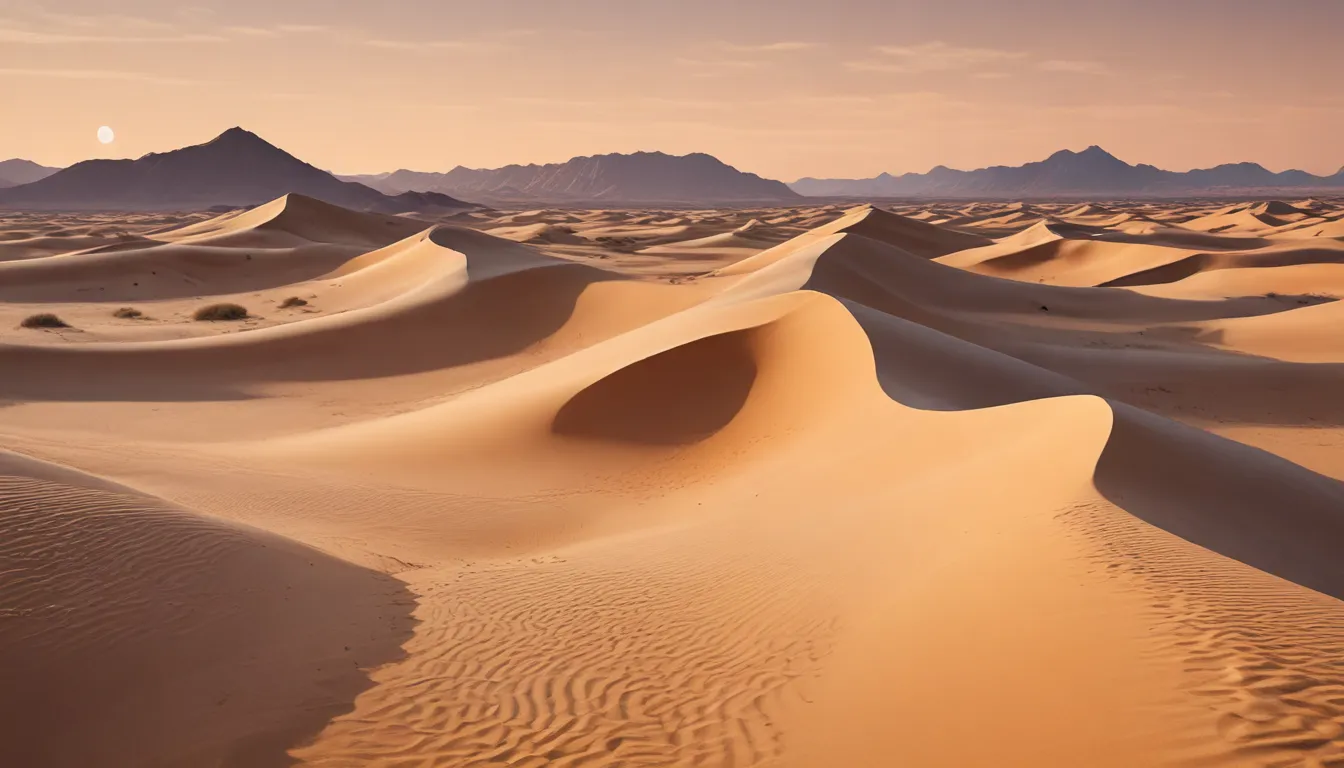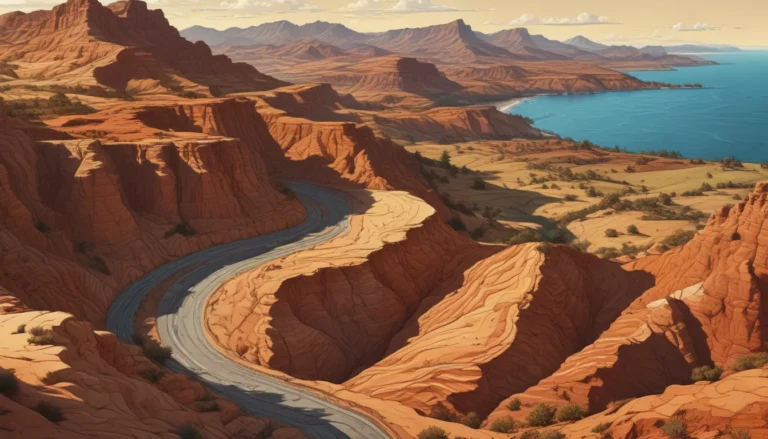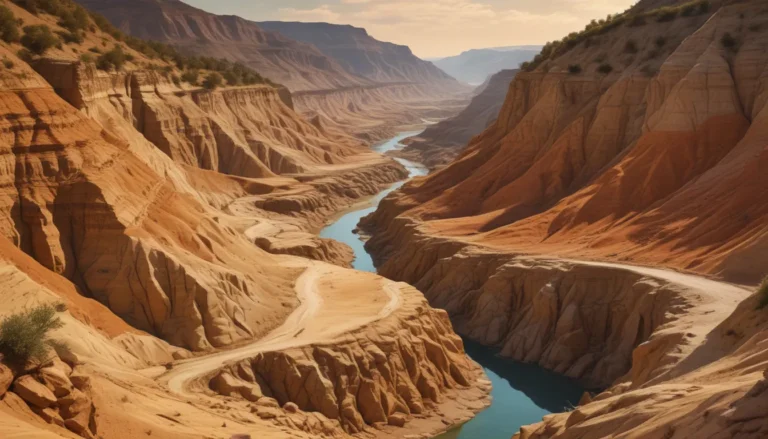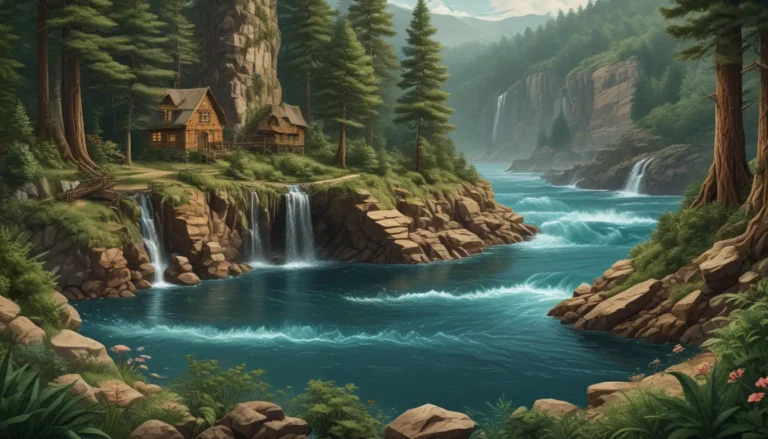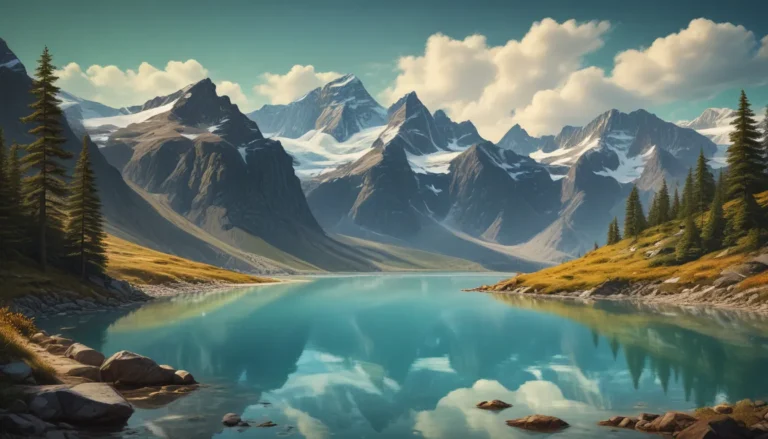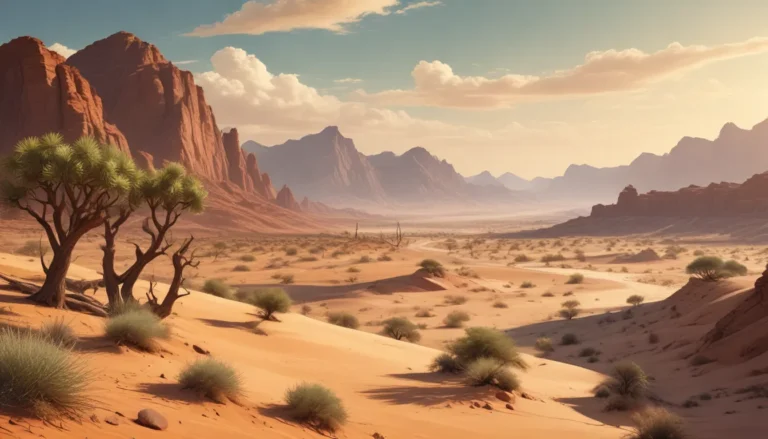A Note About Images: The images used in our articles are for illustration purposes only and may not exactly match the content. They are meant to engage readers, but the text should be relied upon for accurate information.
Parabolic dunes, also known as blowout dunes, are captivating geological formations found in various landscapes worldwide. These unique sand dunes, characterized by their distinct U or V shape, have fascinated geographers and nature enthusiasts with their mesmerizing beauty and impressive size. In this article, we will journey into the intriguing world of parabolic dunes and uncover nine captivating facts about them. From their formation and locations to their ecological significance and dynamic nature, we will gain a deeper understanding of these remarkable geographic wonders and their impact on shaping our planet’s ever-changing landscape.
Key Takeaways:
- Parabolic dunes are shaped by wind and vegetation, playing a crucial role in coastal protection and providing habitats for various species. Conservation efforts are essential to preserve their beauty and significance.
- Parabolic dunes symbolize strength and resilience in various cultures and attract photographers and scientists alike for their unique characteristics and dynamic nature.
The Formation of Parabolic Dunes
Parabolic dunes, also known as blowout dunes, are intriguing landforms shaped by wind erosion and deposition. These dunes feature a crescent or U-shaped form, with the concave side facing into the prevailing winds. Loose sand is transported by strong winds and deposited on the downwind side, leading to the unique shape of parabolic dunes. The erosion and deposition process creates a captivating and distinct feature in deserts and coastal areas.
The Role of Vegetation
Vegetation plays a vital role in the formation and stabilization of parabolic dunes. Unlike other dune types, parabolic dunes are often anchored and stabilized by vegetation, typically grasses and shrubs. The presence of vegetation helps trap sand, preventing further erosion by the wind. This delicate balance between wind, sand, and vegetation contributes to the long-term preservation of parabolic dunes.
The Connection to Coastal Environments
Parabolic dunes are commonly found in coastal environments, where strong onshore winds prevail. These dunes play a crucial role in protecting coastal land against erosion. Their shape and vegetation act as natural barriers, shielding the land from the forces of the ocean. Parabolic dunes are integral to coastal ecosystems, providing habitats for various plant and animal species.
The Importance of Size and Scale
Parabolic dunes can vary significantly in size and scale, influenced by factors such as wind strength, sediment availability, and geological features. Some dunes reach impressive heights of several hundred feet, showcasing the remarkable power of wind and natural forces. These colossal dunes serve as a testament to the dynamic processes shaping our planet.
Famous Parabolic Dunes Around the World
Parabolic dunes have become popular tourist attractions, captivating people worldwide. The Great Sand Dunes National Park and Preserve in Colorado, USA, features stunning parabolic dunes for exploration and hiking. The Lençóis Maranhenses National Park in Brazil offers vast stretches of pristine white sand dunes, creating a surreal landscape.
The Symbolic Significance of Parabolic Dunes
Parabolic dunes hold symbolic significance in various cultures, representing strength, resilience, and adaptability. The curvature of these dunes reflects the ability to withstand powerful winds and adapt to changing environments. Some cultures consider them spiritual or sacred sites, adding a layer of mystique and reverence.
Scientists Studying Parabolic Dune Dynamics
Scientists and researchers study parabolic dunes to gain insights into wind patterns, sediment transport, and vegetation dynamics. Understanding these dynamics is crucial for predicting climate change impacts on dune formation and preservation, as well as informing conservation strategies. Parabolic dunes provide unique opportunities for scientific research and discovery.
A Photographer’s Paradise
Parabolic dunes offer photographers an enchanting subject with their dramatic shapes and lines. The play of light and shadow on the sand creates a mesmerizing visual effect, making these dunes ideal for landscape photography. Whether in deserts or coastal areas, parabolic dunes provide endless creative opportunities for photographers to capture their natural beauty.
The Fragile Nature of Parabolic Dunes
Despite their grandeur, parabolic dunes are delicate and vulnerable to disturbances from human activities. Off-road vehicles, sand mining, and construction can disrupt the delicate balance of these dunes, leading to erosion and habitat loss. Conservation efforts are essential to protect and preserve parabolic dunes for future generations.
Conclusion
In conclusion, parabolic dunes are fascinating geological formations with unique characteristics that play a significant role in shaping our environment. Their intricate processes and diverse ecosystems make them extraordinary natural wonders to appreciate and explore. Next time you encounter a parabolic dune, remember these captivating facts and take a moment to admire the beauty and complexity of these remarkable landforms.
FAQs
-
How are parabolic dunes formed?
Parabolic dunes are formed through a combination of wind erosion, sediment deposition, and vegetation stabilization. Strong winds shape the dunes, while vegetation helps trap sand and maintain their distinct form. -
Where can parabolic dunes be found?
Parabolic dunes are found in deserts, coastal regions, and certain inland areas. Famous examples include Death Valley National Park in the USA and Namib-Naukluft National Park in Namibia. -
How tall can parabolic dunes get?
Parabolic dunes can reach impressive heights of up to 100 meters or more, depending on factors like wind strength and sediment supply. -
What is the ecological significance of parabolic dunes?
Parabolic dunes provide essential habitat for diverse plant and animal species, creating unique ecosystems within their sheltered valleys. -
Can you climb parabolic dunes?
Climbing parabolic dunes may be permitted in certain areas, but it is crucial to follow local regulations to preserve these fragile ecosystems and avoid disrupting their natural balance.
Our commitment to delivering engaging and accurate content ensures that each fact is contributed by real users like you. Explore and learn with us, trusting in our dedication to quality and authenticity.
